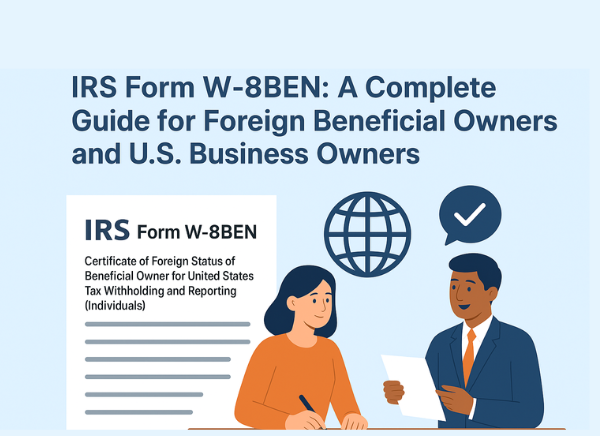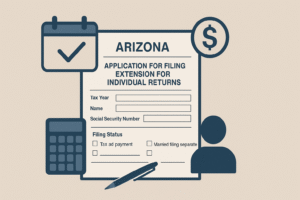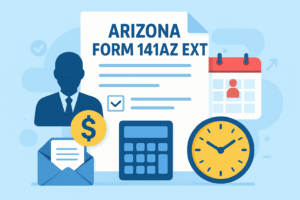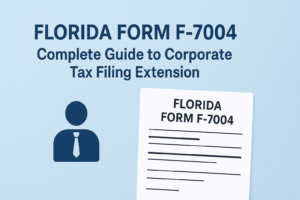When U.S. companies make payments to foreign individuals or entities, they are required to comply with IRS withholding and reporting rules. One of the most critical documents in this process is Form W-8BEN, Certificate of Foreign Status of Beneficial Owner for United States Tax Withholding and Reporting (Individuals).
This form helps non-U.S. persons establish their foreign status, claim beneficial ownership of income, and—when applicable—take advantage of tax treaty benefits to reduce or eliminate withholding tax.
Purpose of Form W-8BEN
The primary purpose of Form W-8BEN is to allow a foreign individual (non-U.S. citizen or non-U.S. resident alien) to:
- Certify foreign status – Establish that they are not a U.S. person for tax purposes
- Claim beneficial ownership – Identify themselves as the rightful recipient of the income.
- Reduce or eliminate withholding tax – If their country has a tax treaty with the U.S., they can claim reduced withholding rates on payments such as dividends, royalties, or interest.
For example, if a U.S. company pays royalties to an author residing in India, the default withholding tax rate is 30%. However, under the U.S.-India tax treaty, the author may be eligible for a reduced rate. Submitting a properly completed Form W-8BEN allows the payer to apply the treaty rate instead of withholding the full 30%.
Who Must Complete Form W-8BEN?
Form W-8BEN must be completed by:
- Non-U.S. individuals receiving income from U.S. sources.
- Foreign beneficial owners who are not conducting business through a U.S. trade or office.
- Recipients of passive income such as:
- Dividends from U.S. corporations
- Interest from U.S. financial institutions
- Royalties from U.S. publishers, music companies, or software firms
- Certain types of compensation for services (if applicable)
Important: Form W-8BEN is only for individuals. If the beneficial owner is an entity (corporation, partnership, trust, etc.), they must use Form W-8BEN-E instead.
Who Is Considered Foreign Status of Beneficial Owner?
A foreign beneficial owner is the individual who:
- Owns or controls the income being paid by the U.S. source.
- Is not a U.S. citizen or U.S. resident alien for tax purposes.
- Is entitled to the income under their country’s tax laws and not acting as an intermediary or agent.
Examples of foreign beneficial owners:
- An Indian author receiving royalties from a U.S. publisher.
- A Canadian investor earning dividends from a U.S. corporation.
- A German consultant receiving passive service fees without operating a U.S. business.
For instance, if a Canadian freelancer works with a U.S. company, they are considered a foreign beneficial owner and must provide a W-8BEN to the payer.
Who is not considered a foreign beneficial owner?
- A U.S. citizen or green card holder (they must use Form W-9).
- An entity such as a foreign company or trust (they must use Form W-8BEN-E).
- An agent, nominee, or intermediary who only passes payments to the true owner.
How to Complete Form W-8BEN – Line by Line Instructions
Form W-8BEN has three main parts: Identification of Beneficial Owner, Claim of Tax Treaty Benefits, and Certification.
Part I: Identification of Beneficial Owner
- Line 1: Name of individual – Enter your full legal name.
- Line 2: Country of citizenship – Specify your citizenship country.
- Line 3: Permanent residence address – Must be outside the U.S.; include street, city, province, postal code, and country. P.O. boxes are not acceptable.
- Line 4: Mailing address (if different) – Provide only if different from permanent address.
- Line 5: U.S. taxpayer identification number (TIN) – Required if claiming treaty benefits. Can be SSN, ITIN, or EIN.
- Line 6: Foreign tax identifying number – Provide your local tax ID (e.g., PAN in India, SIN in Canada).
- Line 7 – Provide a reference number, if applicable (e.g., account number with the withholding agent).
- Line 7: Reference number(s) – Optional, often used by financial institutions for account tracking.
- Line 8: Date of birth – Format: MM-DD-YYYY.
Part II – Claim of Tax Treaty Benefits
- Line 9: Enter your country of residence for tax purposes. Must match the treaty country.
- Line 10: Special rates and conditions – If claiming treaty benefits, specify the income type (e.g., dividends, royalties) and applicable treaty article with reduced withholding rate. Example: “Article 12 of U.S.-India Treaty, 15% rate for royalties.”
Part III – Certification
- The individual must sign and date the form.
- By signing, you certify that all information is accurate, and you are the beneficial owner of the income.
- Unsigned or incorrectly signed forms are invalid.
How Often to Obtain W-8BEN Forms
A Form W-8BEN is valid for the year signed and the next three full calendar years (unless circumstances change earlier, such as a change of address or residency).
Example: A form signed on August 2025 is valid until December 31, 2028.
Financial institutions and withholding agents must request updated forms once the validity expires.
What If Not Filling Out W-8BEN Forms?
Failing to submit a valid Form W-8BEN can result in:
- Default 30% withholding on U.S.-source income (even if a treaty reduces it).
- Loss of treaty benefits – The payer cannot legally apply reduced rates without documentation.
- IRS reporting issues – Payments may be reported under incorrect classifications, leading to compliance problems.
- Delays in payment processing – Banks and brokers may withhold or freeze funds until proper documentation is received.
Therefore, timely completion is essential for both foreign individuals and U.S. payers.
What is the difference between W-8BEN Form vs. W-8BEN-E Form?
It’s common to confuse Form W-8BEN and Form W-8BEN-E, but they serve different types of beneficial owners.
| Feature | W-8BEN | W-8BEN-E |
| Used by | Individuals | Entities (corporations, partnerships, trusts, estates) |
| Length | 1 page | 8+ pages |
| Information required | Citizenship, foreign TIN, tax treaty claim | Entity classification, GIIN (if applicable), tax treaty claim |
| Purpose | Certifies individual’s foreign status | Certifies entity’s foreign status |
What Business Owners Do With W-8BEN?
For U.S. business owners, financial institutions, and withholding agents, collecting Form W-8BEN is a compliance requirement. Once the form is received from a foreign payee, business owners must follow key steps:
1. Validate the Form
- Ensure all mandatory fields are filled (name, country, address, signature, and date).
- Confirm the individual is not mistakenly using Form W-9.
- Verify treaty claims are consistent with the IRS treaty table.
2. Maintain Records
- Retain the W-8BEN for at least four years after the last payment.
- Do not send to the IRS directly; instead, keep it on file for audit purposes.
3. Apply Correct Withholding Tax Rates
- Apply reduced treaty rates if the form is valid.
- Default to 30% withholding if the form is missing, incomplete, or expired.
4. Report Payments to the IRS
- File Form 1042-S to report payments to foreign individuals.
- File Form 1042 annually to summarize withholding activity.
5. Renew and Update Forms
- Track expiration dates and request updates every 3 years.
- Require new forms if payee’s tax residency changes.
Key Point for Business Owners: W-8BEN protects both the payee (by preventing over-withholding) and the business (by ensuring IRS compliance).
FAQs on Form W-8BEN
What is an FTIN and how to get it?
An FTIN (Foreign Tax Identification Number) is the taxpayer identification number issued by your country of residence. It is used to identify you for tax purposes in your home country and is often required on Form W-8BEN, especially if you are claiming treaty benefits.
- Examples of FTINs by country:
- India → PAN (Permanent Account Number)
- Canada → SIN (Social Insurance Number)
- UK → UTR (Unique Taxpayer Reference)
- Germany → Steuer-Identifikationsnummer
To get one, you must apply through your local tax authority. Most countries require residents earning income to register for a tax ID.
Even though the IRS sometimes allows this field to be left blank, most U.S. payers require an FTIN to apply treaty benefits.
What is a tax treaty?
A tax treaty (Double Taxation Agreement) is a legal agreement between the U.S. and another country that prevents individuals from being taxed twice on the same income.
- The U.S. has treaties with many countries such as India, Canada, the UK, and Germany.
- Treaties usually lower the withholding tax rate on U.S.-source income like dividends, royalties, and interest.
- Example: Under the U.S.-UK tax treaty, dividends may be taxed at 15% instead of 30%.
To use a treaty, you must:
- Be a tax resident of the treaty country.
- Complete Form W-8BEN and claim the treaty article.
- Provide a valid FTIN and U.S. TIN (if required).
Who must add a U.S. TIN in Form W-8BEN?
A U.S. Taxpayer Identification Number (TIN) is required on Form W-8BEN if:
- You are claiming treaty benefits (Part II of the form).
- The IRS requires it for the type of income (e.g., scholarships, pensions).
- The payer (withholding agent) insists on it for compliance purposes.
If you are not claiming treaty benefits, you may not need to add a U.S. TIN, but many payers prefer it.
What should I do if I don’t have a U.S. TIN?
If you don’t already have a U.S. TIN but need one to claim treaty benefits:
- Apply for an ITIN (Individual Taxpayer Identification Number) using Form W-7 with the IRS.
- Provide supporting documents like a passport.
- Wait for processing (7–11 weeks).
Until you have one:
- You can submit Form W-8BEN without a U.S. TIN.
- However, the payer must withhold 30% by default.
- Treaty benefits cannot be applied until the TIN is provided.
If you expect recurring U.S.-source income, apply for an ITIN early.
Final Thoughts
The IRS Form W-8BEN is more than just paperwork — it is the foundation of proper U.S. tax withholding for foreign individuals. By accurately certifying foreign status and claiming treaty benefits, it helps reduce unnecessary taxes and ensures compliance for both the beneficial owner and the U.S. business owner.
Foreign individuals should complete and update this form on time, while U.S. payers should properly collect, validate, and maintain it to avoid penalties.






